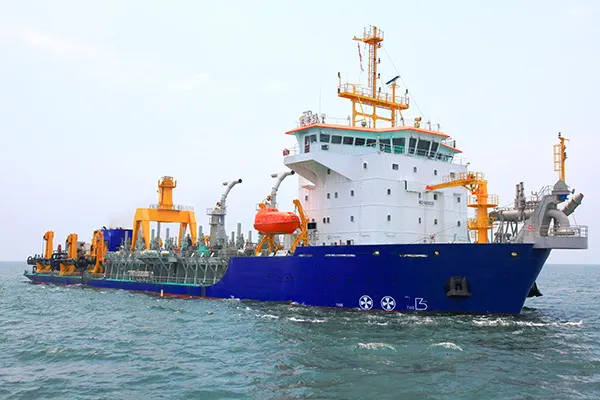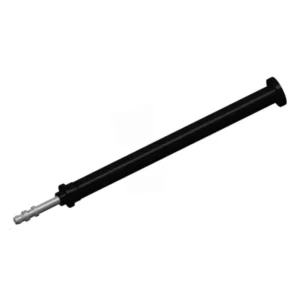Trailing Suction Dredger Overflow Cylinder
Являясь одним из производителей, поставщиков и экспортеров механической продукции, мы предлагаем гидравлические цилиндры и многие другие изделия.
Пожалуйста, свяжитесь с нами для получения подробной информации.
Почта:sales@hydraulic-cylinders.net
Производитель поставщик экспортер гидроцилиндров.
Trailing Suction Dredger Overflow Cylinder
The trailing suction dredger overflow cylinder is a vital component in modern dredging equipment. Designed to optimize the performance of trailing suction dredgers, this cylinder plays a crucial role in managing the overflow system.
The trailing suction dredger overflow cylinder is an essential component for achieving efficient and effective dredging operations. With its robust construction, precise control, reliable actuation, and customizable settings, this cylinder enhances the overall performance of trailing suction dredgers. By following the recommended usage methods and maintenance practices, operators can maximize the performance and longevity of the overflow cylinder, ultimately improving the efficiency and effectiveness of dredging activities.
Trailing Suction Dredger Overflow Cylinder Key Characteristics:
- Надежная конструкция:
- The overflow cylinder is built with high-quality materials, ensuring durability and longevity even in challenging dredging environments.
- Its robust construction enables it to withstand high pressures, harsh conditions, and constant use, maintaining consistent performance throughout dredging operations.
- Точное управление:
- This cylinder offers precise control over the overflow system, allowing for accurate management of the dredged material.
- It ensures optimal control and regulation of the overflow process, facilitating efficient sediment separation and discharge.
- Reliable Actuation:
- The overflow cylinder provides reliable actuation capabilities, ensuring smooth and consistent operation of the overflow system.
- It delivers the necessary force to control the movement of the overflow gate, ensuring effective management of the dredged material flow.
- Customizable Settings:
- This cylinder allows for customizable adjustment of various parameters, such as opening and closing speed, stroke length, and actuation pressure.
- Operators can tailor these settings to match specific dredging requirements, optimizing the efficiency and effectiveness of the overflow system.
Trailing Suction Dredger Overflow Cylinder Parameter:
| Product Name | Trailing Suction Dredger Overflow Cylinder |
| Features: | Provide pulling force for the lifting of the relief tube |
| Bore diameter: | Up to 280 mm |
| Rod diameter: | Up to 180 mm Stroke up to 6000 mm |
| Pressure: | up to 32MPa |
| Pulling force: | Maximum 900KN |
| Applications: | Trailing Suction Dredger |
Rod diameter: up to 180mm
Stroke up to 6000mm
Dredger Tank Cutter-Suction Cylinders Application:

Usage Method Of Trailing Suction Dredger Overflow Cylinder:
- Installation:
- Follow the manufacturer’s guidelines to install the Overflow Cylinder securely onto the trailing suction dredger.
- Ensure proper alignment and attachment of the cylinder to the overflow gate and associated components, ensuring smooth and reliable operation.
- Overflow System Management:
- Utilize the dredger’s control system to operate and manage the Overflow Cylinder.
- Control the opening and closing of the overflow gate using the designated controls, allowing for precise control over the dredged material flow and discharge.
- Dredging Operations:
- Activate the Overflow Cylinder to adjust the position of the overflow gate as required during dredging operations.
- Adjust the cylinder’s settings, such as speed and stroke length, to optimize the overflow process and ensure efficient sediment separation and discharge.
How To Disassemble Hydraulic Cylinder?
Disassembling a hydraulic cylinder requires careful attention and adherence to proper procedures to ensure safe and efficient disassembly. Here is a step-by-step guide on how to disassemble a hydraulic cylinder:
- Gather The Necessary Tools And Equipment:
- Wrenches or socket set
- Pry bar or screwdriver
- Rubber mallet or dead-blow hammer
- Clean rags or shop towels
- Hydraulic fluid catch pan or container
- Safety gloves and goggles
- Prepare The Work Area:
- Ensure you have a clean and organized work area with sufficient space to lay out the disassembled components.
- Place an absorbent mat or oil absorbent material to catch any spilled hydraulic fluid.
- Relieve Hydraulic Pressure:
- Before starting the disassembly process, release the hydraulic pressure from the cylinder. This can be done by activating the hydraulic system control valve to retract the cylinder fully.
- Remove Fittings And Connections:
- Using wrenches or a socket set, carefully loosen and remove any fittings, connectors, or hydraulic hoses attached to the cylinder.
- Keep track of the fittings and their corresponding locations for reassembly.
- Secure The Cylinder:
- Ensure the cylinder is properly supported using a suitable workbench or vise to prevent it from falling or rolling during disassembly.
- Remove The Gland Or End Cap:
- The gland or end cap is typically located at the rod end of the cylinder.
- Use a wrench or socket to loosen and remove the retaining bolts or nuts.
- If the gland or end cap is stuck, you can lightly tap it with a rubber mallet or dead-blow hammer to help loosen it.
- Once loose, carefully remove the gland or end cap, allowing any hydraulic fluid to drain into the catch pan.
- Extract The Piston And Rod Assembly:
- With the gland or end cap removed, you can now access the piston and rod assembly.
- Gently slide the piston and rod assembly out of the cylinder barrel, ensuring you have a firm grip to prevent it from falling or getting damaged.
- If the assembly is stuck, you can use a pry bar or screwdriver to carefully apply leverage and assist in its removal.
- Inspect And Clean The Components:
- Once disassembled, inspect all components for signs of wear, damage, or contamination.
- Clean the components thoroughly using clean rags or shop towels, removing any dirt, debris, or hydraulic fluid.
- Pay close attention to the piston, rod, cylinder barrel, and seals.
- Replace Or Repair Components:
- If any components are worn out or damaged, it is recommended to replace them with new ones.
- Inspect the seals for any signs of wear, and replace them if necessary.
- Consult the manufacturer’s guidelines or seek professional advice if you are unsure about component replacement or repair.
- Сборка:
- Follow the manufacturer’s instructions for reassembling the hydraulic cylinder.
- Apply a suitable hydraulic fluid or lubricant to the seals and components during reassembly.
- Ensure all fittings and connections are tightened to the specified torque values.
- Double-check the proper alignment and orientation of components before completing the reassembly.
Возможности и мощности завода:
(1) Сборка
Мы располагаем первоклассной независимой сборочной платформой для проведения исследований и разработок. Цех по производству гидравлических цилиндров имеет четыре полуавтоматические линии сборки подъемных цилиндров и одну автоматическую линию сборки цилиндров наклона с проектной годовой производственной мощностью 1 млн. штук. Цех по производству специальных цилиндров оснащен полуавтоматической очистной сборочной системой различных спецификаций с проектной годовой производственной мощностью 200 тыс. штук и оснащен известным обрабатывающим оборудованием с ЧПУ, обрабатывающим центром, высокоточным специальным оборудованием для обработки цилиндров, роботом-сварщиком, автоматической очистной машиной, автоматической сборочной машиной цилиндров и автоматической покрасочной производственной линией. Существующее критически важное оборудование насчитывает более 300 комплектов (комплектов). Оптимальное распределение и эффективное использование ресурсов оборудования позволяет обеспечить требования к точности изделий и удовлетворить потребности в высоком качестве продукции.


(2) Механическая обработка
Цех оснащен специализированным токарным центром с наклонной направляющей, обрабатывающим центром, высокоскоростным хонинговальным станком, сварочным роботом и другим сопутствующим оборудованием, которое позволяет обрабатывать цилиндрические трубы с максимальным внутренним диаметром 400 мм и максимальной длиной 6 м.

(3) Сварка

(4) Painting & coating
With small and medium-sized cylinder automatic water-based paint coating lines, to achieve automatic robot loading and unloading and automatic spraying, the design capacity of 4000 pieces per shift;
We also have a semi-automatic paint production line for large cylinders powered by a power chain, with 60 cases per shift design capacity.


(5) Testing
We have first-class inspection facilities and test beds to ensure that the performance of the cylinder meets the requirements.

We are one of the best hydraulic cylinder manufacturers. We can offer comprehensive hydraulic cylinders. We also provide corresponding agricultural gearboxes. We have exported our products to clients worldwide and earned a good reputation because of our superior product quality and after-sales service. We welcome customers at home and abroad to contact us to negotiate business, exchange information, and cooperate with us!
Take a Tour of Our VR Factory:
Take a tour of our VR factory with the following
How Does Forklift Hydraulic Cylinder Work?
Hydraulic Cylinder Application:



